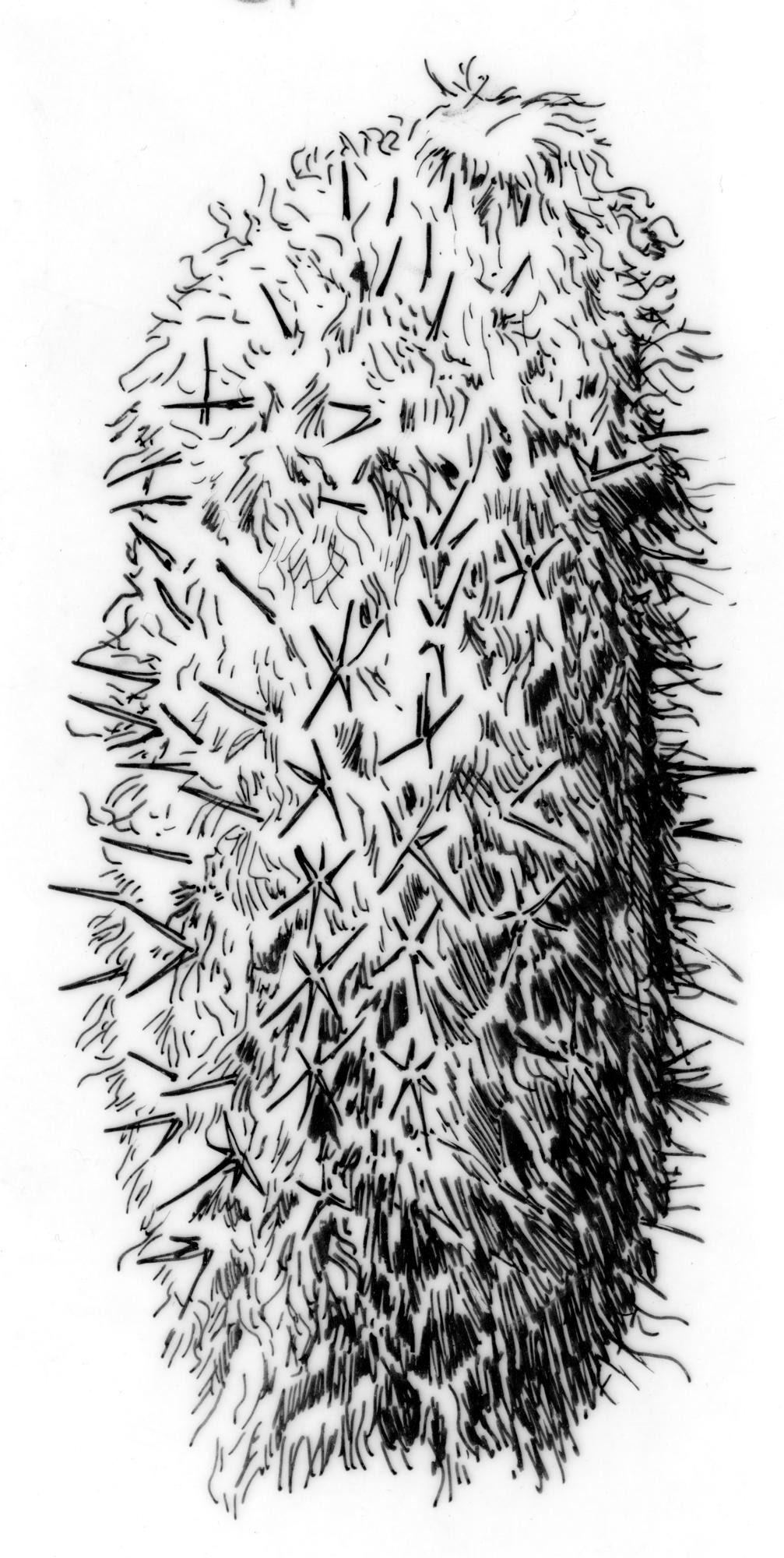
Greek oros—mountain, referring to the natural habitat of the genus.
Body shrubby, cylindrical, thick, erect. Areoles generally with long white hair. Spines numerous. Flowers diurnal, bilaterally symmetrical, tubular to funnel-shaped, orange, red or purple; filaments at the base of the throat fused to form a cap over the nectar chamber. Pericarpel with many scales that are hairy in the axils; flower tube straight or curved. Fruit spherical to ovoid, hollow, splitting at the base.
Species occasionally available include: O. fossulatus (Labour.) Backeb. with more pronounced tubercles, yellow spines and red flowers; O. ritteri Cullm. with yellow spines, pure white hair and flowers pinkish violet; O. hendriksenianus Backeb. from S Peru & N Chile with generally shorter spines and about 10 ribs; and O. trollii (Kupper) Backeb. from S Bolivia and N Argentina which, unlike the above species, is a smaller growing shrub less than 1 m tall.
Mostly with long hair; pericarpel and flower tube scaly and hairy cf. Melocactus.
About 7 species from the S American Andes.
Source: (1997). Cactaceae. In: . Horticultural Flora of South-eastern Australia. Volume 2. Flowering plants. Dicotyledons. Part 1. The identification of garden and cultivated plants. University of New South Wales Press.
